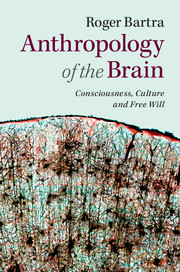Book contents
- Frontmatter
- Contents
- Preface
- Part I Consciousness and symbolic systems
- 1 The hypothesis
- 2 Evolution of the brain
- 3 Brain plasticity
- 4 Is there an internal language?
- 5 Amputations and supputations
- 6 The atrophied exocerebrum
- 7 The symbolic substitution system
- 8 Neuronal mirrors
- 9 Consciousness within hand’s reach
- 10 Outside and inside: the immense blue
- 11 The musical spheres of consciousness
- 12 Artificial memory
- 13 The lost soul
- Part II Brain and free will
- Bibliography
- Index
5 - Amputations and supputations
Published online by Cambridge University Press: 05 June 2014
- Frontmatter
- Contents
- Preface
- Part I Consciousness and symbolic systems
- 1 The hypothesis
- 2 Evolution of the brain
- 3 Brain plasticity
- 4 Is there an internal language?
- 5 Amputations and supputations
- 6 The atrophied exocerebrum
- 7 The symbolic substitution system
- 8 Neuronal mirrors
- 9 Consciousness within hand’s reach
- 10 Outside and inside: the immense blue
- 11 The musical spheres of consciousness
- 12 Artificial memory
- 13 The lost soul
- Part II Brain and free will
- Bibliography
- Index
Summary
The external environment closest to the brain is the body itself. The senses of sight and hearing both receive a wealth of information proceeding from the extracorporeal world. In contrast, the motor and sensory maps of the cerebral cortex are connected to intracorporeal experiences. Each hemisphere of the brain contains maps of the opposite side of the body. These maps are very stable throughout life and they are similar in all individuals. However, accidents that involve the loss of an extremity or the interruption of the nerve flow coming from some part of the body provoke important modifications in the sensory and motor maps. Studies on monkeys have shown that each finger of the hand and different regions of the palm and back of the hand are drawn in a precise zone of the cortex in an order and arrangement similar to the extremity’s form. If the third finger is amputated (or its nerve flow is segmented) the contiguous brain areas corresponding to the second and fourth digits will invade the third finger’s space soon after. This modification is reversible if the nerve flow is restored. There is a good deal of information on the plastic adaptations in the cerebral cortex of different mammalian species when their extremities have been amputated: in all examples the corresponding areas respond to impulses that come from adjacent cortical zones, although sometimes some part that fails to receive body signals can remain silent. Added to this mysterious reorganization is an extraordinary discovery: the brain area corresponding to the paralyzed arm of a monkey is activated when the face, especially the chin and the jaw, is touched. And so the following question comes to mind: why are regions of the cortex that correspond to a paralyzed or amputated part of the body inserted into a massive reorganization process of the brain map instead of remaining deactivated and silent? Why is there this singular expression of horror vacui? Researchers do not have an answer. And, as we shall see, the consequences of the reorganization that erases the empty silent spaces have strange and apparently undesirable effects.
- Type
- Chapter
- Information
- Anthropology of the BrainConsciousness, Culture, and Free Will, pp. 27 - 34Publisher: Cambridge University PressPrint publication year: 2014



